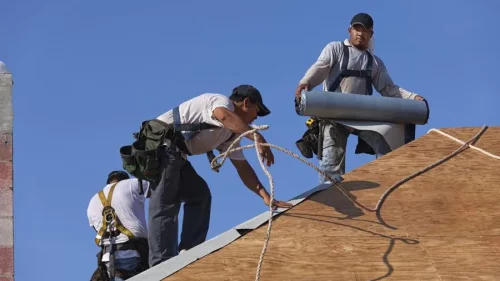Roofs are an integral part of our homes, protecting us from the elements and ensuring our safety and comfort. Like all parts of a house, however, roofs can become damaged or worn out over time. Whether it’s due to natural disasters like storms and hail, accidents, or the inevitable wear and tear, there may come a time when you’ll need to file a roof insurance claim.
If you’ve never been through this process before, the idea of navigating insurance claims might seem daunting. But fear not! With the right knowledge, you can navigate this process smoothly. Here’s what you need to know about roof insurance claims.
1. Understanding Your Policy
Before anything else, familiarize yourself with your homeowner’s insurance policy. Not all policies are created equal, and coverage for roof damage can vary.
- Replacement vs. Repair: Some policies might only cover repairs, while others offer full replacement. It’s crucial to know the difference and understand what your policy covers.
- Depreciation: If your policy covers the actual cash value (ACV), it means the insurer will deduct depreciation from your claim payout. On the other hand, a replacement cost policy will cover the full repair or replacement cost without depreciation.
- Specific Exclusions: Certain causes of damage might not be covered, such as neglect or improper maintenance. Always review your policy’s exclusions to avoid surprises.
2. Documentation is Key
When you notice roof damage, immediately document it. Take clear photographs of the damage and any potential causes (like fallen trees or hailstones). This documentation will be invaluable when filing your claim and will serve as evidence for your insurer.
3. Get a Professional Inspection
It’s always a good idea to get your roof professionally inspected after noticing damage. A trained eye can help identify all areas of concern, provide estimates for repair or replacement, and offer insight into the cause of the damage. This assessment can be beneficial when communicating with your insurance company.
4. Contact Your Insurance Company Promptly
Once you have all the necessary documentation and an inspection report in hand, contact your insurance company to initiate a claim. The sooner you start this process, the better.
Your insurer will likely send out an adjuster to inspect the damage. This person will determine the extent of the damage, the cause, and the amount covered under your policy.
5. Review the Adjuster’s Report
When the adjuster completes their inspection, they will provide you with a report detailing their findings and the claim amount they recommend. It’s essential to review this report carefully. If there are discrepancies or if you believe the adjuster missed something, don’t hesitate to discuss it with them or seek a second opinion.
6. Know Your Rights
If you believe your claim has been unjustly denied or if the payout is insufficient, you have rights. Familiarize yourself with the appeals process, and if necessary, consider seeking legal counsel. It’s essential to advocate for yourself and ensure you receive the coverage you’re entitled to.
7. Engage Qualified Contractors
Once your claim is approved, work with licensed and reputable roofing contractors to carry out the necessary repairs or replacements. Be wary of “storm”chasers”—contractors who show up after a major weather event and offer cheap repairs. Always research and get multiple quotes to ensure you’re working with a reliable professional.
8. Preventive Measures
While it’s not always possible to prevent roof damage, certain steps can mitigate the risk. Regular maintenance, timely repairs, and understanding potential threats (like trees with overhanging branches) can go a long way in preserving your roof’s health.
In Conclusion
Navigating a roof insurance claim in Mooresville might initially seem complex, but armed with the right knowledge, it’s a manageable task. Remember, your roof is your home’s first line of defense against the elements, so ensure it’s always in top shape. Regular inspections, understanding your policy, and being proactive in the claims process will serve you well in protecting this vital part of your home.
Solid Roofing
Home

